Sasha Rudensky is a Russian-born artist residing in New York City and Connecticut. She studied Studio Art and Russian Literature at Wesleyan University where she received a BA in 2001. She received her MFA in photography from Yale University in 2008. Sasha is currently an Assistant Professor of Photography at Wesleyan University.
Tell us about your background, where and when did you study photography, who were your teachers, who influenced you the most? In one of your interviews you mentioned that one of your teachers of photography (during undergraduate studies) was mostly interested in nude photography. Influenced by him you tried to do nude photography as well, but very soon you realised that it is not your cup of tea and you decided to learn photography by yourself (that was before you applied for a Master Program in Yale University). How did you overcome the influence of the teacher, I suppose it is not easy for a young photographer when there is an authoritative tutor?
Sasha Rudensky (SR): I started taking pictures in high school, fairly early, because I was in love with a boy who liked photography. I was a good student, and enjoyed most of my classes, but derived a more intense kind of pleasure and excitement from taking photographs and spending time in the darkroom. Coming from an intensely academic family and an elite prep school, I never seriously considered art as a career or a serious pursuit, and went on to a good liberal arts college intending to study literature, philosophy, and history. I did enroll in photography courses during my first year, and again felt that I was more intimately connected to that medium than anything else that I was studying.

© Sasha Rudensky, In Taiga, 2011
In retrospect, and especially now as a teacher myself, it’s curious that my love for the photographic language was not inspired by the teacher I was studying with, but rather, in spite of him. We had a good personal relationship and he was generally supportive of my ambitions, but as someone focused on studio photography and the female nude in particular, he was off sync from my interests in documentary work. When I worked on my undergraduate thesis – a series of 35mm black and white photographs taken in a bathhouse in Moscow, it was an independent endeavor. It was not as if I ever made a conscious effort to ‘shed’ my early influences or to overcome authority, it was instinctual, and really, it seemed like I couldn’t photograph in any other way.
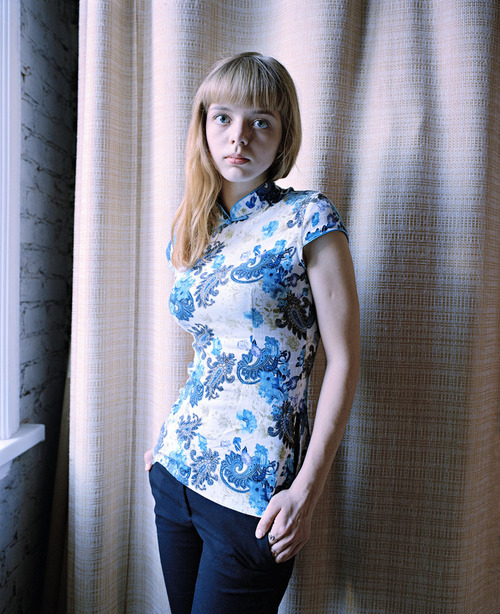
© Sasha Rudensky, Amateur, 2013
Unlike my student experience at Wesleyan, my teaching (I now head the photography program at a school where I received my BA) is closely tied to my practice as an artist, and as in many serious institutions, the faculty are expected to prioritize their professional pursuits along with their academic load. I have a very flexible schedule, and maybe I should be careful in advertising this fact, but full time teaching requires me to be on campus only 26 weeks a year, leaving the remainder of the year to travel or work in my studio. Though I would not say it never happens, it is very rare that when I am teaching, I resent the fact that I am not working on my own projects.

© Sasha Rudensky, The Fencer, 2011
How do you manage to combine photographer’s work and teaching? How do you find time to travel and shoot in Russia while teaching in USA?
SR: Teaching photography, just like its practice, is an organic process. I do not preach a specific methodology, and truthfully, spend little time meta-thinking about how I teach and where do my ideas come from. My time at Yale was undeniably extremely important to my formation as an artist and by extension to my teaching. The phrasing of this question implies that better teaching assumes openness and cultivation of individuality, and theoretically I subscribe to that and strive to create that kind of atmosphere. However art education, more than let’s say mathematics, is an extension of oneself, one’s views and subjectivity, so I would be disingenuous to contend that I am not aware that my students get exposed to my own photographic interests and preferences. I am not dogmatic, and even encourage rebellion as long as it is backed up by good work, but I am not a neutral presence in the classroom, my students would corroborate that.
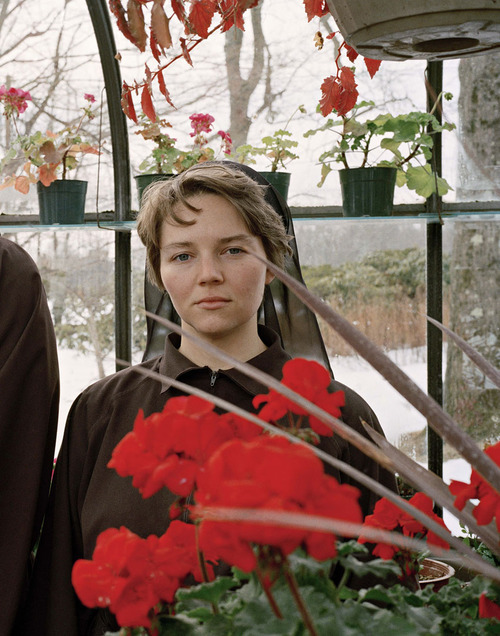
© Student work, Anna Shimsak, 2013
Do you try to teach your students your own photographical view, to share with them your philosophy, or do you rather aim at creating a good atmosphere for creative work in order to develop students’ talents and individuality? What is your teaching methodology? Do you develop it by yourself or do you also borrow something from your own teachers?
SR: When I select students for my courses during the interview process I always ask them to tell me what they are interested in photographing and why. From the first weeks of class I leave the subject matter and approach entirely open, only asking that they shoot the kind of pictures they have not seen before. One of the pleasures of teaching a medium where the technical learning curve is so steep is that almost immediately the conversation is about conceptual and formal ideas, rather than technical expertise. And to me, that is a fundamentally a more exciting conversation. In my introductory classes I give no assignments, encouraging my students to try their hand at different types of shooting. The majority gravitate towards a version of street shooting – the Connecticut landscape, small town street scenes. If I start to get bored or have a sense that the kids are defaulting to that kind of shooting, rather than choosing to do it, I’ll give an assignment that requires them to construct pictures, set up light, think about the psychology of what they are putting together. For some that can become a real eye-opener, others really struggle with it.
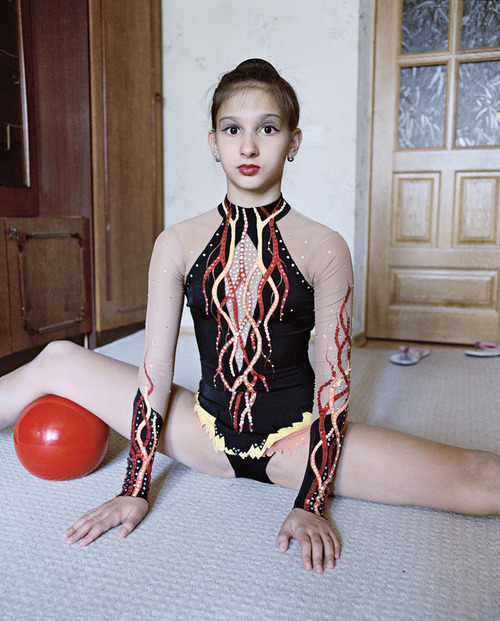
© Sasha Rudensky, Gymnastics Champion
In the intermediate courses I insert myself more actively into my students’ practice, as I see it as my job to shake up what they have identified as their comfortable way of shooting. Last year I came up with a new assignment, which I gave out on the first day - to create and photograph a “Clockwork Orange”. It was inspired by a brilliant piece in the New Yorker by Anthony Burgess that describes the etymology of the concept becoming the title of his great classic, and I thought it a perfect way to commence a class.
What are the building blocks of curriculum of your students? Lectures, critical seminars, individual meetings, portfolio-reviews? Is there something special in the methodology that distinguishes it from those in other universities? Perhaps, some of your students are not born Americans either. Do they also shoot projects about their home countries? Do they go there in order to find their own roots through photography while applying visual language they developed during studies in USA? Don’t you think that it is, in a certain sence, a kind of «exploitation» of one’s home country, which sometimes includes making it look exotic?
SR: I run a very small program, which includes two regular courses, individual tutorials, and an in depth all year honors thesis resulting in a one-person exhibition at the end of the year. I teach both analog and digital classes, and in the last two years have developed a hybrid introductory course, which introduces beginning students to both modes of working. It is an exceedingly demanding class – students work anywhere from 18-25 hours a week outside of the 5 hours of class meetings, but are generally very satisfied to be versed in both workflows. The courses that I teach combine weekly lectures, weekly critiques, studio visits with outside artists, and field trips to galleries, collections, and museums. I start by giving a very concise technical introduction (usually only takes 3-4 weeks to get through both darkroom and Photoshop introductions), then move quickly towards slide lectures that are used to give students both a background in photographic history as well as examples of works that can inspire their own aesthetic and conceptual exploration.
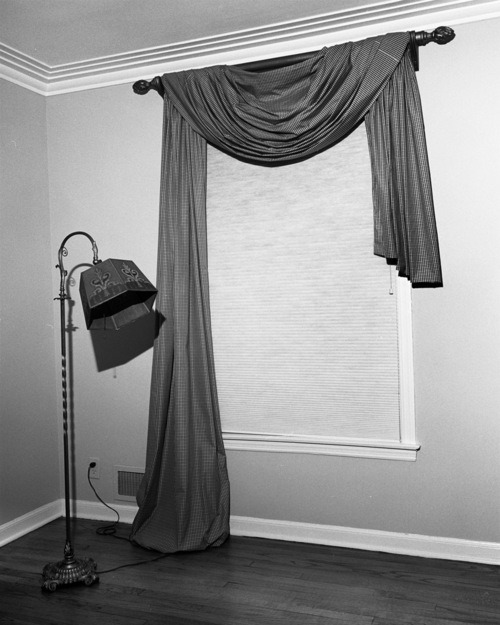
© Student work, Jared Radin
One of the cornerstones of my teaching is to look at ALL the images my students shoot, not just those they select for critiques. Over the years I have found that students are far smarter visually then they give themselves credit to be. Looking at contact sheets (or digital shooting in Bridge) allows me to have an insight into their thinking, not just their (often poor) judgment as editors. The ability to separate stronger images from the blandness of the rest is a sophisticated skill that usually develops slower than the instinct for interesting images. Meeting with students individually to do so is perhaps when I’m most effective as a teacher.
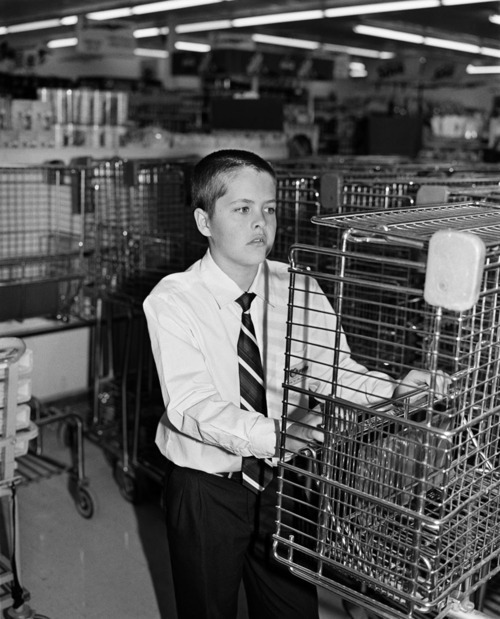
© Student work, Eli Durst
As for the second part of the question, yes, I do have students that are foreign-born and occasionally return to their countries of origin to make work, generally when they are more advanced and working on their final projects. It is difficult for me to generalize about what are the psychological or practical reasons behind the need “to return, except to say that one’s early visual impressions are very powerful, and can stimulate a strong response resulting in interesting images. Speaking for myself, I am not “exploiting” Russia or Ukraine and do not feel like what I am after is the exotic. There are far more exotic places that I could explore with my camera, and have tried in the past with boring results. What I look for is the familiar, recognition and connection rather than a need to “wow”. The eastern European aesthetic sits very deeply inside me; it is my subject. When I am there I am visually aroused in a way I do not find myself to be in other places. It is my world and I go there and describe it. Perhaps the fact that I have lived abroad for the majority of my life means that I can see more clearly, at least I would like to believe that I do.
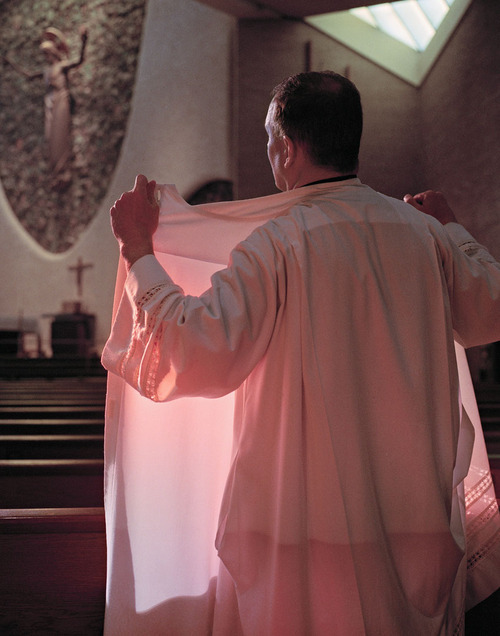
© Student work, Anna Shimsak, 2012
Do you consider yourself an American or Russian photographer? In one of your interviews you told that you learned a lot from works of Stephen Shore and William Eggleston, and that you liked how they work with colour and space, while shooting in Russia you carried their books with you everywhere. Do you apply western methods widely working in Russia, with Russian “material”? Would you say that there is also something from Russian photographical school/tradition in your works? Do you feel anything in common with metaphysical photography by a well known Russian photographer Alexander Slusarev (passed away in 2010)? A number of Russian photographers follow his views and phylosophy. Several of your pictures reminded me about a method they use. By the way, what is a tone of your feelings on Russian reality — critical, ironic, indifferent?
SR: I feel myself to be equally a Russian and American photographer. My Russianness is responsible for the ideas and feelings behind my pictures and the American-ness for the language that I use to describe it. Eggleston, Shore, Sternfeld are photographers whose work I know so well I have internalized it. It is part of what made me fall in love with color and eventually find expression that felt authored. In that regard I would agree that part of what I do is project an American tradition or aesthetic, though again, it is all very subconscious. Alexander Slusarev’s work I found later, after completing a number of projects, and though I like it and feel a kinship to it, I would not say that his practice was influential on my work. I find his work very lyrical and formal, in some ways hermetic in its tight form.

© Sasha Rudensky, Norma Pospolita, 2013
To use a literary analogy, Slusarev is a poet, and I am a storyteller. As for my feelings about contemporary Russia and Ukraine – they are completely contradictory, which is why I love working there – the place is endearing, offensive, absurd, beautiful… I can keep stringing along adjectives, but the pictures describe my feelings more eloquently. I do not position myself as a social critic, or a political photographer for that matter, but undeniably I look for humor and irony at the same time as for something redeeming and intimate.
Recently one German curator told me in a private conversation that he finds the level of education in art schools to be decreasing nowadays. According to him teachers are not focused on development of students’ creative vision and skills, rather they primarily teach students how to sell themselves. To what extent do you agree with that? Do you also see this tendency in USA? Would you say that today’s students are more experienced in self-promotion (even opportunistic), as compared to you and your class-mates? After all, you teach at the same Wesleyan university where you did your undergraduate.
SR: Occasionally I catch myself grumbling about “today’s students” and their focus on presentation rather than content, but as is the case with all such assertions, they are as true as they are not. In general I try to not dabble in nostalgia of how “we used to do things”, though undeniably the market driven art world is a reality that is well known to students and professionals alike. That for majority of artists the goal is to show and sell their work in commercial galleries has profoundly changed how we all do things and is hardly neutral. The university culture has changed everywhere, certainly in United States as the focus has shifted from knowledge for its own sake to more practical know-how that will get you a job, but good teaching rises above that.

© Student work, Lindsay Keys
Had you stayed in Russia, what would your creative path in photography have been? Would your visual language and approach to photography be very different? Let us imagine that you stayed in Russia and got a photographical education here (for example, in Rodchenko School or anywhere else). Do you think it would be harder to make a carrier in this area and to develop your creativity? Would it be easier in some other aspects?
SR: I have often wondered what I would have done had I stayed in Russia, and the answer is quite simple, I would have not been a photographer. I am convinced that there needed to be a particular chain of events that insured that I ended up doing what I did, and if any links in that chain were missing, I would have ended up elsewhere. One of my projects – portraits of women that I imagine to be my surrogate selves had I not left– explores that very theme.
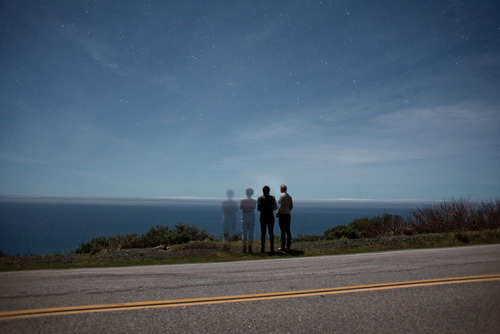
© Student work, Lindsay Keys
Would you like to teach in Russia? What is the main thing you would teach Russian young photographers given your American experience? In your opinion, what do Russian photographers miss?
SR: I have not taught in Russia, but I have done a number of portfolio reviews and lectured extensively in Ukraine, and have really enjoyed it, only because there is such an educational vacuum that needs to be filled. There are essentially no educational institutions devoted to fine art photography, which means that most of what comes out of them is an imitation of western schools whether European or American. I do not think that I would teach any differently in Russia that I do in the States – I teach to look for uniqueness and to cultivate an individual voice, which perhaps would be a harder sell within the bounds of a Russian educational system that prioritizes skill.
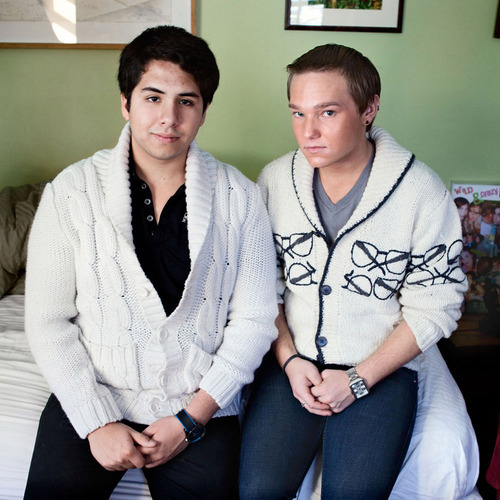
© Student work Lombroso, 2011
I know that you also studied Russian literature. Photography and literature seem to be rather different approaches to reflect reality — with the help of a word and by means of a visual image. Does education in literature help you in your work and teaching? Would you say that Russian literature influenced your perception of reality? With what Russian writer do your photographic projects have the most in common? Perhaps, A.P. Chekhov with his satirical approach to Russian daily routine?
SR: I have always felt that photography and literature are very intimately connected, and though use different modes of expression, share a lot philosophically. My connection and love of literature is undeniably there in how I see and how I teach, but so is my love of history of art, cinema, anthropology etc. I often tell my students to look for inspiration outside of photography in their other passions; literature for me was that. As for the writer I identify with most closely – I’ll take Chekhov enthusiastically.
---
LINKS
Sasha Rudensky
Russia
share this page
